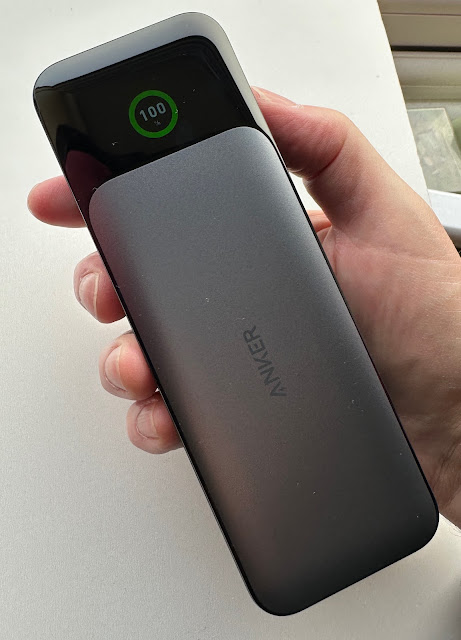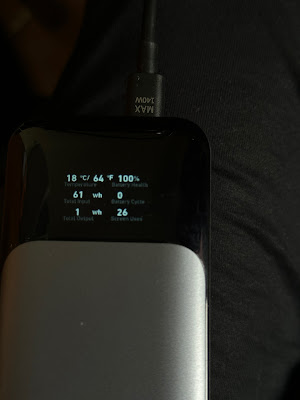The Anker 737 isn’t your mother’s power bank. You see that old gadget in your drawer? This isn't it.
With miniature power bank OS (complete with splash screen) and with 'phone' form factor (as in hold and operate in your right hand, if needed), this also offers 140W (!) output and input over (hot off the press) Power Delivery 3.1, plus it packs the maximum capacity it's legal to ship (at least in the UK), with 24000mAh (at 3.7V, or almost 90Wh in potential power).

Reassuringly, this is from Anker, one of the few accessory makers which doesn't put a foot wrong in terms of quality, support, or marketing (i.e. no fake reviews on the likes of Amazon). And the hardware is indeed stunning, with no rattles or creaks, and with beautifully textured sides.

As you can see below, the form factor is a 'phone-like' cuboid. Yes, it's a chunk compared to a phone (24000mAh etc) but there's a power/select button under the right thumb and there's a 'smart' LCD screen on the front.

The display seems to be backed by a real time microOS, perhaps the first in a portable power bank, which delivers detailed power status of each port, of overall power bank charge and battery health, and even temperature. (The latter as an extra safety measure in case things ever got too hot when pulling or pushing the maximum 140W.)
By default the display turns off after 30 seconds, but you can toggle this to stay on with an actual setting in the microOS. Though of course it drains a little power, so it's best to leave the display ready for action with a button press - and then further presses cycle through the various displays and panes.
(It's not clear whether the Anker 737 is firmware-upgradable. I'll try and find out and update this review if so.)

The business end of the 737 is kept really simple. No legends, no small print, just two USB Type C ports (both capable of the full 140W if used alone) and one USB-A port (provided for older accessories or phones and which maxes out at 18W).
For output, the two Type C ports can be used interchangeably though only the top-right one (above) can also be used for input, i.e. recharging the power bank.
Obviously, the maximum output (and indeed input) from all ports is limited to 140W, but I'd like to stress that this is a lot. Typically the most I'd ask of something like this would be to recharge my MacBook Air (so 65W or similar), a modern flagship phone (so 36W at most), and something else, a Kindle or Bluetooth speaker os similar. With all of that charging at maximum power (so assuming perfect, capable cables, and devices with low battery charge) I'd still not be breaking the 100W barrier, so the Anker 737 is very, very future-proof.
The 737 power bank does also assume Power Delivery 3.1 spec cables and equipment for its maximum output (and input). It comes with one such C-to-C cable, but in real world conditions I'm sure people will plug in all sorts of cables and gadgets, in which case power output will be scaled back to suit. But then that's where the smart display comes in, since you can always see, in real time, the exact power being pushed out through each port. And, if unsatisfactory, you can go hunting in your drawers for a better cable or switch devices around for higher efficiency. Options, options.
I bought the
Anker 737 with my own money, by the way, this isn't an Anker promotional sample. At £140, this is expensive - very expensive. But I had it on a
Black Friday deal at £99 and even when this is over, there are usually £15% off (or similar) vouchers and deals to be had
on Amazon UK, so expect to pay just over £100 normally.
Which, as Stella Artois used to say, can be thought of as 'reassuringly expensive'. You do get what you pay for - and there's an awful lot of 'getting' (and paying!) here.









Comments